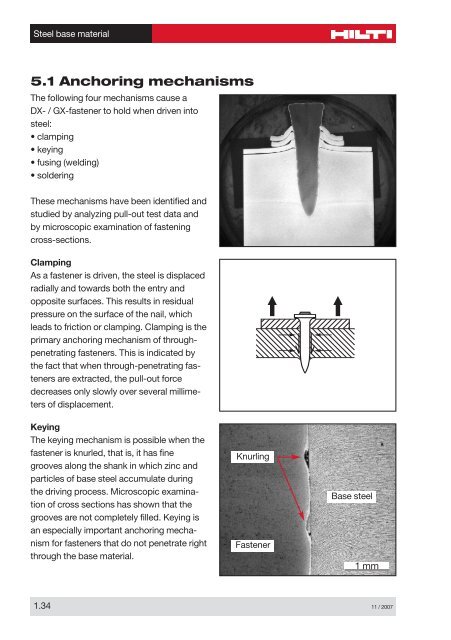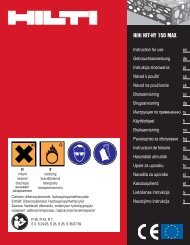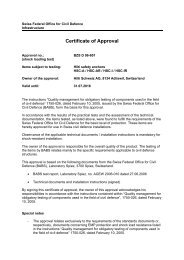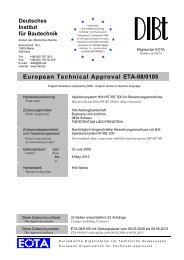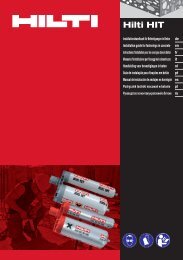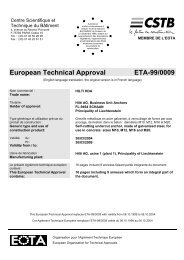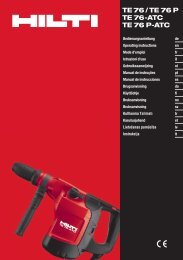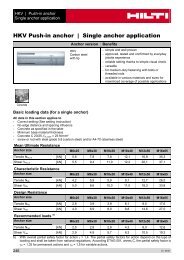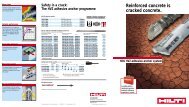00 Contents - Hilti Svenska AB
00 Contents - Hilti Svenska AB
00 Contents - Hilti Svenska AB
Create successful ePaper yourself
Turn your PDF publications into a flip-book with our unique Google optimized e-Paper software.
Steel base material<br />
5.1 Anchoring mechanisms<br />
The following four mechanisms cause a<br />
DX- / GX-fastener to hold when driven into<br />
steel:<br />
• clamping<br />
• keying<br />
• fusing (welding)<br />
• soldering<br />
These mechanisms have been identified and<br />
studied by analyzing pull-out test data and<br />
by microscopic examination of fastening<br />
cross-sections.<br />
Clamping<br />
As a fastener is driven, the steel is displaced<br />
radially and towards both the entry and<br />
opposite surfaces. This results in residual<br />
pressure on the surface of the nail, which<br />
leads to friction or clamping. Clamping is the<br />
primary anchoring mechanism of throughpenetrating<br />
fasteners. This is indicated by<br />
the fact that when through-penetrating fasteners<br />
are extracted, the pull-out force<br />
decreases only slowly over several millimeters<br />
of displacement.<br />
Keying<br />
The keying mechanism is possible when the<br />
fastener is knurled, that is, it has fine<br />
grooves along the shank in which zinc and<br />
particles of base steel accumulate during<br />
the driving process. Microscopic examination<br />
of cross sections has shown that the<br />
grooves are not completely filled. Keying is<br />
an especially important anchoring mechanism<br />
for fasteners that do not penetrate right<br />
through the base material.<br />
Knurling<br />
Fastener<br />
Base steel<br />
1 mm<br />
1.34 11 / 2<strong>00</strong>7


